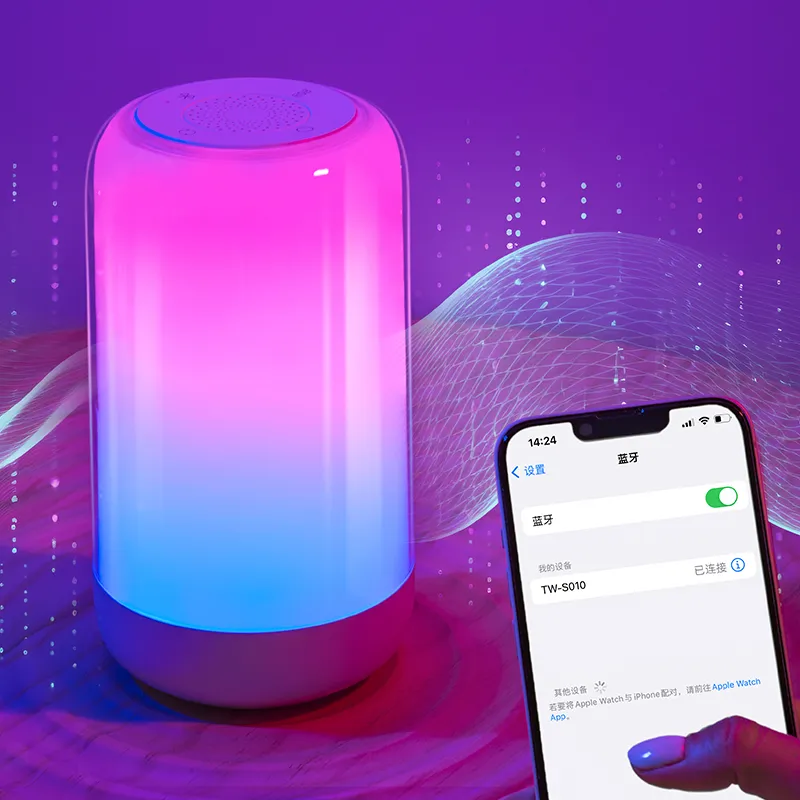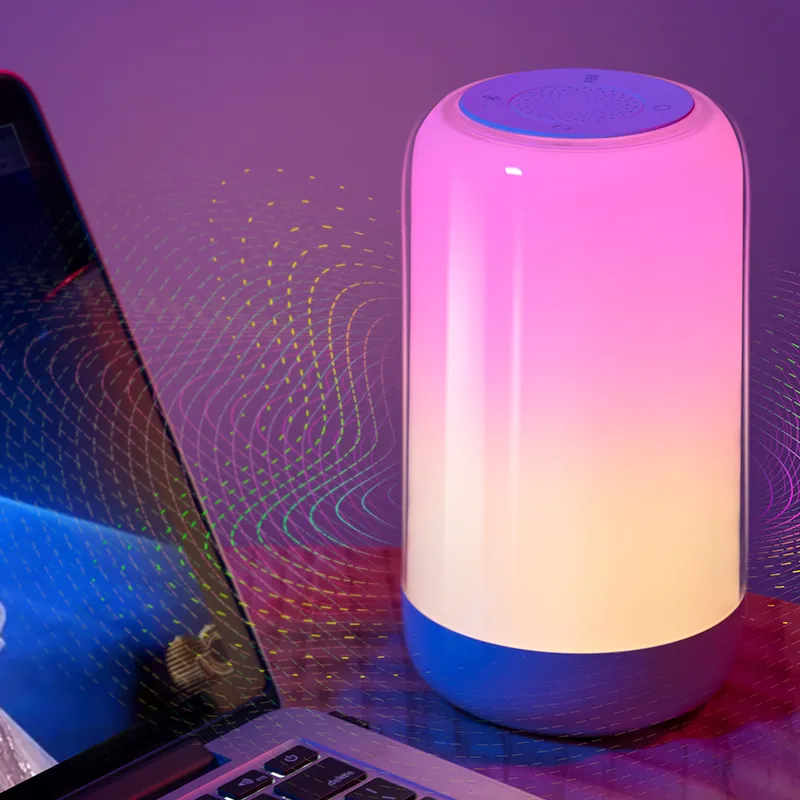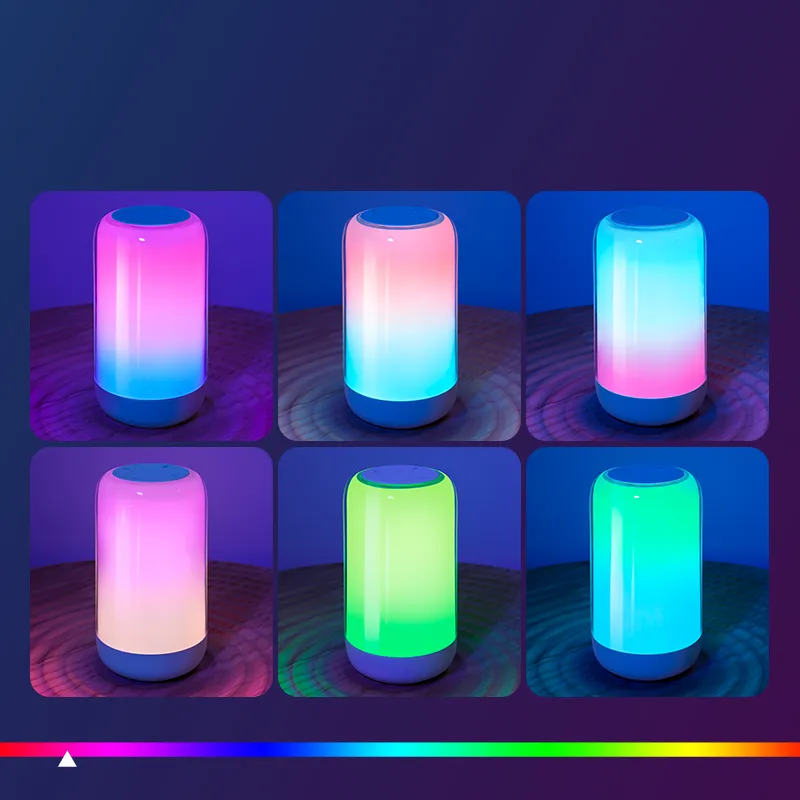Why won't my RGB LED night light change color?
In recent years, RGB LED night lights have gained popularity among consumers for their versatile color changes, energy-saving features, and powerful ambiance-enhancing properties. However, some users have discovered that their RGB LED night lights, which once freely switched colors, have suddenly become fixed to a single color, or even completely unable to change color.
This phenomenon has left people wondering: Why won't my RGB LED night light change color? What's the problem?
This article will provide an in-depth analysis of this issue from the perspectives of technical principles, common faults, usage environments, control methods, and troubleshooting strategies, to help readers fully understand and correctly address the "color change failure" phenomenon of RGB LED night lights.

How RGB LED night lights work: Do you know?
To understand why RGB LED night lights don't change color, you must first understand their basic principles.
1. RGB Primary Color Composition
RGB stands for red, green, and blue, the three primary colors of light. RGB LED night lights use built-in three-color LED chips to blend different colors of light, creating a rich color palette.
2. Driver Circuit Adjustment
The brightness of each LED chip is controlled by the current level. Pulse-width modulation (PWM) technology in the circuit adjusts the output ratio of red, green, and blue to produce a variety of colors.
3. Control Methods
• Manual button: Switches between preset colors and modes.
• Remote control: Selects different lighting effects via infrared or radio frequency signals.
• Smart control: Connects to a mobile app via Bluetooth or Wi-Fi for more complex lighting control.
As can be seen, the successful color change of an RGB LED night light depends on the proper functioning of the light source, driver circuit, and control system. Any problem in any of these links can cause the light to not change properly.

Why isn't my RGB LED night light changing color?
When users discover that their RGB LED night light only maintains a single color or no longer responds to control, common causes include the following:
1. Damaged light source chip
The core of an RGB LED night light consists of three independent LED chips (red, green, and blue). If one chip is damaged, the corresponding color channel will be lost. For example:
• Damaged red chip → The light cannot produce red or any color that requires red.
• Damaged green chip → The light cannot produce green or any other color that requires red.
• Damaged blue chip → All blue-related lighting effects are lost.
The end result is that the RGB LED night light appears to be unable to change color properly, retaining only a residual color effect.
2. Driver circuit failure
RGB LED night lights rely on circuitry to regulate current. If a channel in the driver circuit is damaged or outputs abnormally, a color channel will not light up, affecting the overall color-changing effect. This often occurs due to circuit overheating or component aging after prolonged use.
3. Control signal failure
Many RGB LED night lights are controlled via a remote control or app. If the remote control battery is depleted, the infrared receiver is damaged, or the Bluetooth/Wi-Fi module is malfunctioning, users may be unable to switch colors. While it may appear that the night light is no longer changing color, the control signal is actually failing to transmit.
4. Firmware or Program Errors
Some smart RGB LED night lights have built-in microprocessors that execute lighting mode switching. If a software error or data loss occurs, the night light may not properly execute color-changing commands, resulting in a fixed light pattern.
5. Environmental Impacts
Environmental factors such as high temperature, humidity, or dust accumulation may also affect the normal operation of RGB LED night lights. For example:
• Dust entering the heat dissipation holes can cause the chip to overheat and damage some LEDs.
• Humidity can cause a short circuit on the circuit board, affecting color switching.
• Unstable voltage can cause malfunctioning control circuits.

What are the signs that an RGB LED night light is not changing color?
When an RGB LED night light malfunctions, users often experience the following symptoms:
• Only a single color is displayed: For example, only white or blue light is displayed, and it cannot switch to other colors.
• Partial color change failure: Some color modes still work, but some colors are missing, resulting in display errors.
• Unresponsive remote control or app: The light is fixed to a certain color when powered on and no longer responds to user commands.
• Flickering or intermittent dimming: Some RGB LED night lights may flicker or even intermittently lose their color change function due to circuit anomalies.
Analysis of Common Problems with RGB LED Night Lights
To help consumers understand more clearly, the following analyzes the main issues:
1. Chip Aging and Damage
Although RGB LED night lights have a long lifespan, if they operate in high-temperature environments for a long time, the LED chips will gradually age, resulting in decreased brightness and uneven color. This is a major cause of color change failure.
2. Circuit Overload
Some users use improper power supplies or low-quality sockets, causing voltage fluctuations and damage to the driver circuit, ultimately resulting in the RGB LED night light not changing color properly.
3. Controller Issues
• Low remote control battery.
• Blocked remote control signal.
• Disconnection between the app and the night light.
On the surface, these issues may appear to indicate the lamp is "not changing color," but in reality, the control signal isn't transmitting properly.
4. External Environmental Factors
Humidity or dust accumulation not only affects the circuit board but can also cause the RGB LED night light's cooling system to fail, leading to overheating and damage to the chip, affecting the color-changing function.
How to Troubleshoot an RGB LED Night Light's Color Change Problem?
If you find your RGB LED night light isn't changing color, you can troubleshoot by following these steps:
1. Check the Power Supply and Voltage
Confirm that the outlet voltage is stable to avoid overvoltage or undervoltage that could affect the night light.
2. Check the Controller Status
• Does the remote control have power?
• Is the app connected properly?
• Does the lamp respond to signals?
3. Test Fixed Colors
Observe whether only certain colors are missing. If so, a chip may be defective.
4. Observe for any abnormalities
Flickering, overheating, or unusual odors, which may indicate a circuit malfunction.
5. Check the Operating Environment
Is the lamp located in a humid, hot, or dusty location?

Consumer Precautions When Using RGB LED Night Lights
• Avoid prolonged operation at high brightness: Continuous operation at high brightness increases chip temperature and accelerates aging.
• Keep the environment dry: Humidity can cause circuit shorts, affecting the color-changing function.
• Regularly clean dust: Maintain good heat dissipation to prevent circuit damage from overheating.
• Use the controller correctly: Regularly replace the remote control batteries and ensure proper app connection.
• Choose safe and reliable products: Poor-quality RGB LED night lights are more likely to experience color-changing failures.
Summary of Reasons Why RGB LED Night Lights Don't Change Color
RGB LED night lights are lighting products that use a combination of red, green, and blue LED chips to achieve a variety of color changes. Their appeal lies in their flexible color switching. However, when users find that their RGB LED night lights don't change color, the problem often lies with the light source chip, circuit driver, control signal, or usage environment.
Common causes include:
1. Damage to a specific color chip;
2. Driver circuit failure;
3. Failure to transmit signals from the remote control or app;
4. Circuit abnormalities caused by external factors.
Understanding these principles and common issues will help consumers conduct more targeted troubleshooting when using RGB LED night lights and avoid misjudgments. Only with proper maintenance and reasonable use can RGB LED night lights achieve their desired lighting and ambiance effects over the long term.
How does Huari manage production efficiency?
Our factory implements advanced production lines and total quality management systems. This allows us to efficiently produce over 1,000,000 LED units per month. Buyers purchasing wholesale or bulk orders benefit from stable supply, low prices, and reliable quality. Products include LED night lamps, vanity lights, cabinet lamps, and panel lights.
ISO 9001 and ISO 14001 certifications guarantee consistent quality, while CE/RoHS/ERP approvals ensure international compliance. Customization and promotional offers further support buyers' business needs.
